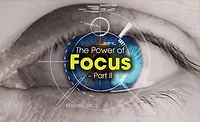The Power of Recognition

According to Gallup, only 33% of employees are engaged at work. Based on OC Tanner research, 79% of employees who quit their jobs claim that a lack of appreciation was a major reason for leaving. This seems to support the common belief that employees who quit don’t leave the job; they leave their boss. One last statistic—that same OC Tanner research revealed that 65% of Americans claimed they hadn’t been recognized even one time in the past year.
In today’s battle to attract and retain top performers, organizations are looking for effective strategies like additional perks and optimized workplaces. But, perhaps they are overlooking an easily executed and less expensive approach: employee recognition.
Before you go all ‘here comes the participation trophy philosophy’ on me, that’s not the point at all. I am not suggesting that bosses should recognize employees just for showing up every day or pat them on the head for arriving on time.
In a recent article, David Novak, co-founder and retired chairman of Yum! Brands, spoke about purposeful recognition. He explains that for recognition to drive results, it must be earned. Team members need to know how to earn it. Bosses need to clearly define what they recognize and how it links to performance outcomes. When they do this, Novak points out, it becomes a catalyst for driving results. This is what he calls purposeful recognition.
In my view, this approach starts with leaders creating goals, defining expectations, and understanding the behaviors that will lead to their desired results. Then they need to consistently and continually provide recognition for those behaviors. Based on research conducted on effective employee recognition, the following key characteristics are typically cited:
- Recognition should be immediate. Provide the recognition as soon after the desired behavior has occurred as possible. The longer the time lapse between the action and the communication of appreciation, the lower the impact.
- Recognition should be delivered personally. The power of social rewards comes from how they are delivered. The fact that a manager or owner is taking time to recognize or praise an employee emphasizes to that person the importance of the behavior.
- Recognition should be valuable. To be effective, the praise or reward must be valued and meaningful to the individual receiving it. Customizing the reward or the method of delivery based on personal preferences is important. Some people may value their autonomy and would prefer to be thanked in private. Others may be interested in having their recognition be highly visible. Another possibility is a preference for rewards that recognize a team or group’s contributions.
- Recognition should be a direct reinforcer of desired behavior. It must not be given superficially. The key is to provide recognition that positively reinforces desired behaviors. Recognition must be honest and deserved. Rewarding employees who are not top performers, who are not consistently displaying the behaviors that are linked to achieving stated goals, will likely have an adverse effect on the motivation of high performers. (The participation trophy philosophy.)
Beyond providing motivation and communicating appreciation to the person being recognized, the act of recognition serves to help other employees understand what success looks like. It is, therefore, both a tool for personal reward and, perhaps more importantly, an opportunity to reinforce the desired culture of the organization.
Effective leaders need to overcome the barriers that prevent them from providing regular praise and recognition and develop habits that reinforce it.

- Get rid of the notion that recognition giving is something you must do on top of everything else on your plate. Integrate appreciation into all that you’re already doing. Express gratitude in your emails. When you see something positive being done or said, stop and acknowledge that person. Genuinely thank those around you when they provide assistance.
- Not knowing your people doesn’t excuse you from not recognizing them when they do something well or make a positive contribution. During one-on-one meetings with your people, ask about their recognition preferences. Act on them when justified.
- Don’t worry about not knowing how to give recognition well. Do some research on recognition practices. Find one or two that you are comfortable with and try them for several weeks to master the attitude and skills.
- In some organizations there is no expectation for leaders or managers to give recognition. As a manager or the owner, tell everyone in the company that they have permission to recognize one another. Set a personal example by doing so yourself.
- Don’t take good work for granted. If we only give recognition to the superstars, we neglect the behind-the-scenes workers whose consistent performance keeps the business running. As Dave Zinger from the Employee Engagement Network says, “Engagement is about good work done well with others every day.” Look for ways to acknowledge those who are doing good work every day.
The time bosses spend on recognition is one of the best investments they can make. When leaders give their people the recognition they’ve earned, show appreciation, and acknowledge the unique things people have to offer they will drive significantly better results.
Workplace recognition motivates, provides a sense of accomplishment, and helps employees feel valued for their work. It not only boosts individual employee engagement, but it has been found to improve productivity and loyalty to the organization, leading to higher retention. Engaged employees contribute at a higher level. Effective and consistent recognition delivered to those exhibiting desired behaviors will help to drive engagement, motivate high performing employees, and strengthen your company culture. All these are critical to winning the battle to find and retain high performing people.
Looking for a reprint of this article?
From high-res PDFs to custom plaques, order your copy today!







